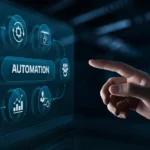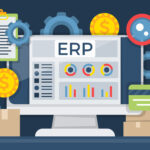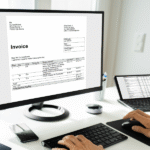E-Invoicing is revolutionizing the way businesses in Malaysia handle their financial transactions. As part of the Inland Revenue Board of Malaysia’s (LHDN) initiative, e-Invoicing aims to enhance tax compliance, reduce fraud, and streamline the invoicing process.
This comprehensive guide provides answers to 50 frequently asked questions about LHDN e-Invoicing, covering everything from the basics of what an e-Invoice is, to the specific requirements for different types of transactions, and the benefits for businesses of all sizes.
Whether you’re a large corporation or a small enterprise, understanding these FAQs will help you navigate the transition to e-Invoicing smoothly and ensure you remain compliant with the latest regulations.
E-Invoice is a digital invoicing system implemented by the Inland Revenue Board of Malaysia (LHDN) to streamline the invoicing process for businesses. It replaces traditional paper invoices with electronic invoices that are generated in specific formats like XML or JSON. This system aims to enhance efficiency, accuracy, and compliance with tax regulations by allowing real-time validation and transmission of invoices directly to LHDN for verification before reaching customers.
The implementation of e-Invoicing by LHDN is aimed at promoting transparency, reducing tax evasion, and improving the efficiency of tax collection. By digitizing the invoicing process, LHDN can better monitor transactions, ensuring that businesses comply with tax regulations and that all sales are accurately reported.
The mandatory implementation of LHDN e-Invoicing will occur in phases, starting on August 1, 2024. The rollout will be gradual, allowing businesses to adapt to the new system over time, with full compliance expected by January 1, 2027.
All commercial taxpayers in Malaysia will be required to adopt LHDN e-Invoicing. This includes businesses of varying sizes and sectors, ensuring that all transactions are captured electronically for tax purposes.
The benefits of LHDN e-Invoicing include improved accuracy in invoicing, reduced processing times, enhanced data security, and easier compliance with tax regulations. Additionally, it minimizes the risk of errors associated with manual entries and allows for real-time tracking of invoices.
LHDN e-Invoices must be generated in specific electronic formats, primarily XML and JSON. These formats are designed to facilitate the structured transmission of invoice data to LHDN for validation and processing.
Once an e-Invoice is generated, it is submitted to the LHDN MyInvois portal for validation. The system checks the invoice against predefined criteria to ensure compliance with tax regulations. This process can be completed almost instantaneously, allowing for quick feedback on the invoice’s status.
An e-Invoice must include essential details such as the supplier’s and buyer’s information, item descriptions, quantities, unit prices, applicable taxes, and total amounts. Additional fields may include unique identifiers and tax exemption details if applicable.
Yes, e-Invoices can be issued for international transactions, provided that the invoicing complies with both Malaysian regulations and the regulations of the country where the buyer is located. It is essential to ensure that all necessary tax implications are considered.
If an error is detected in an e-Invoice, the supplier can request a cancellation or correction through the MyInvois portal. Justifications for the correction must be provided, and the corrected invoice must be resubmitted for validation.
LHDN ensures compliance by mandating that all businesses submit their e-Invoices through the MyInvois system. The system performs real-time validations and audits to monitor compliance with tax regulations, thereby reducing the likelihood of tax evasion.
Businesses that fail to comply with LHDN e-Invoicing regulations may face penalties, including fines or additional scrutiny during tax audits. The exact penalties can vary based on the severity of the non-compliance and the specific circumstances involved.
Certain small businesses or specific sectors may be exempt from mandatory e-Invoicing requirements, depending on their turnover or other criteria set by LHDN. However, most commercial taxpayers will need to comply with the e-Invoicing regulations.
E-Invoicing will streamline the process of claiming tax deductions, as all transactions will be recorded electronically and verified by LHDN. This should simplify the documentation required for tax deductions and reduce disputes over claims.
Businesses should start by assessing their current invoicing processes and identifying necessary changes to comply with e-Invoicing regulations. This may include upgrading software systems to support XML or JSON formats, training staff on the new processes, and ensuring that all required information is captured accurately.
Many accounting and invoicing software solutions are being updated to support LHDN e-Invoicing. Businesses should look for software that can generate e-Invoices in the required XML or JSON formats and integrate with the MyInvois system for seamless submission.
Yes, various training programs and resources are available to help businesses understand and implement LHDN e-Invoicing. These may include workshops, online courses, and support from software vendors that offer e-Invoicing solutions.
Businesses can access the MyInvois portal by registering with LHDN and obtaining the necessary credentials. Once registered, users can log in to submit e-Invoices, track their status, and manage their invoicing processes.
LHDN provides support for technical issues related to the MyInvois portal. Businesses can contact LHDN’s help desk or consult their software vendors for assistance with any technical problems encountered during the e-Invoicing process.
While there may be costs associated with upgrading software or training staff, the implementation of e-Invoicing is expected to save businesses money in the long run by reducing processing times and minimizing errors. Businesses should evaluate their specific needs to determine the potential costs involved.
Yes, e-Invoices can be issued for both goods and services rendered. The invoice must accurately reflect the nature of the service, including descriptions, quantities, and applicable taxes, just like a traditional invoice.
If a customer refuses to accept an e-Invoice, the supplier should communicate the legal requirements and benefits of e-Invoicing. If the issue persists, the supplier may need to provide a traditional invoice as a temporary solution while encouraging the customer to adapt to the new system.
E-Invoicing can enhance cash flow management by enabling faster processing and payment of invoices. With real-time tracking and validation, businesses can expect quicker payments, improving their overall cash flow situation.
Yes, e-Invoicing systems typically include various security measures such as encryption, secure access protocols, and regular audits to protect sensitive data. Businesses should ensure that their chosen software complies with these security standards to safeguard their information.
QR codes in e-Invoices can facilitate quick access to invoice details and enhance verification processes. They may contain encoded data that links to the invoice in the MyInvois system, allowing for easy tracking and validation by both suppliers and buyers.
Yes, e-Invoicing is expected to evolve with advancements in technology. Future updates may include enhanced features for data analytics, integration with payment systems, and broader international compliance standards to facilitate cross-border transactions.
While the transition to e-Invoicing may require initial adjustments for small businesses, the long-term benefits include streamlined processes, reduced paperwork, and improved compliance with tax regulations. This can ultimately lead to greater efficiency and cost savings.
In the event of downtime for the MyInvois system, businesses can queue their invoices for submission. Most e-Invoicing solutions will attempt to resubmit the invoices automatically once the system is back online, ensuring minimal disruption to the invoicing process.
Yes, e-Invoices can be issued for refunds, typically referred to as refund notes. These documents acknowledge the return of goods or cancellation of services and specify the refunded amount, ensuring proper documentation for both parties.
LHDN will monitor the effectiveness of e-Invoicing through data analytics and reporting tools that track compliance rates, processing times, and the overall impact on tax collection. This data will help identify areas for improvement and ensure the system meets its objectives.
Businesses with high transaction volumes, such as retailers and service providers, are likely to benefit the most from e-Invoicing due to the efficiency gains and reduced processing times. However, all businesses can improve their invoicing processes through this system.
E-Invoicing may streamline the tax filing process by providing accurate and timely data directly to LHDN. This can reduce the burden of manual data entry and improve the accuracy of tax returns filed by businesses.
Businesses can ensure the accuracy of e-Invoices by implementing robust data entry protocols, utilizing software that minimizes manual input errors, and conducting regular audits of their invoicing processes to identify and rectify discrepancies.
E-Invoicing can enhance customer relationships by providing faster service and more transparent transactions. Customers can receive invoices quickly and track their payments more efficiently, leading to improved satisfaction and trust in the supplier.
Disputes related to e-Invoices should be addressed through clear communication between the supplier and customer. Both parties should refer to the invoice records in the MyInvois system to resolve any discrepancies, and if necessary, adjustments can be made through the portal.
Data analytics can provide insights into invoicing trends, payment behaviors, and compliance rates. Businesses can leverage this information to optimize their invoicing processes, improve cash flow management, and make informed decisions regarding their operations.
Yes, businesses can customize e-Invoices to reflect their branding, including logos, color schemes, and specific layouts. This helps maintain brand identity while complying with LHDN’s requirements for e-Invoicing.
Self-billed e-Invoices are generated by the buyer rather than the supplier. This arrangement is typically used in specific scenarios where the buyer has agreed to create the invoice on behalf of the supplier, often seen in long-term contracts or recurring services.
E-Invoices must be archived in accordance with LHDN regulations, typically requiring businesses to retain records for a specified period. Digital archiving solutions should ensure that invoices are stored securely and can be easily accessed for audits or reviews.
Businesses may encounter challenges such as adapting to new technologies, ensuring staff are trained, and integrating e-Invoicing systems with existing accounting software. Addressing these challenges proactively can help facilitate a smoother transition to e-Invoicing.
LHDN is committed to maintaining data privacy and security within the e-Invoicing system. Measures are in place to protect sensitive information and ensure that only authorized personnel have access to invoice data for compliance and auditing purposes.
If businesses encounter technical issues, they should first consult their software vendor for support. If the issue persists, they can reach out to LHDN’s help desk for assistance in resolving any problems related to the MyInvois system.
Yes, e-Invoices can be issued for partial payments, allowing businesses to document transactions accurately when customers pay in installments. Each partial payment can be tracked through separate e-Invoices, ensuring clarity in the payment process.
E-Invoices can facilitate faster payments by reducing processing times and enabling quicker validation. With real-time tracking, businesses can follow up on outstanding invoices more efficiently, leading to improved cash flow.
The rise of e-Invoicing is likely to diminish the use of traditional paper invoices, as businesses recognize the efficiency and compliance benefits of digital invoicing. This shift may encourage more businesses to adopt technology-driven solutions for their invoicing needs.
Businesses can track the status of their e-Invoices through the MyInvois portal, which provides real-time updates on validation, acceptance, and payment status. This transparency helps businesses manage their invoicing processes more effectively.
E-Invoicing can significantly change the role of accountants by automating many aspects of invoicing and data entry. Accountants will need to adapt to new technologies and focus more on strategic financial analysis rather than manual processing tasks.
By reducing the reliance on paper invoices, e-Invoicing supports sustainability efforts by minimizing waste and promoting environmentally friendly practices. This shift aligns with global trends toward digital solutions and reducing carbon footprints.
The future of e-Invoicing in Malaysia looks promising, with ongoing developments aimed at enhancing the system’s functionality and integration with other digital services. As more businesses adopt e-Invoicing, it is expected to become the standard practice for invoicing in the country.
Businesses can provide feedback on the e-Invoicing system through official channels established by LHDN, such as surveys or direct communication with LHDN representatives. This feedback can help improve the system and address any concerns raised by users.









